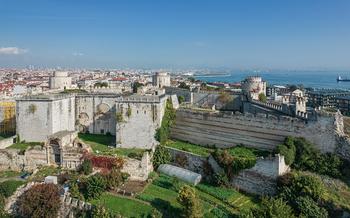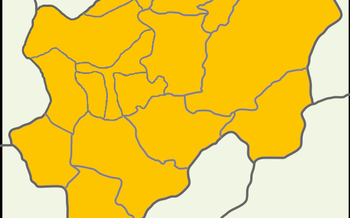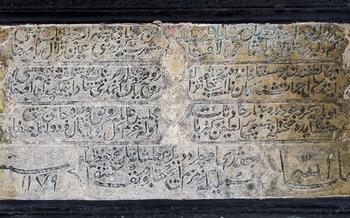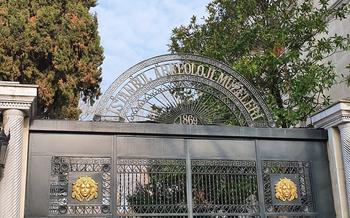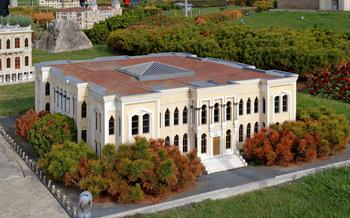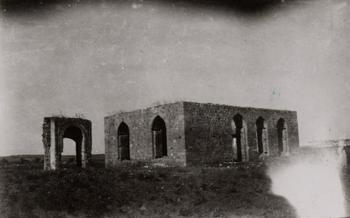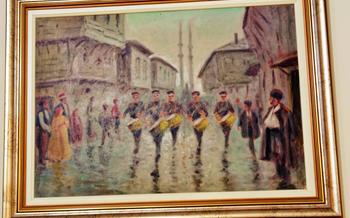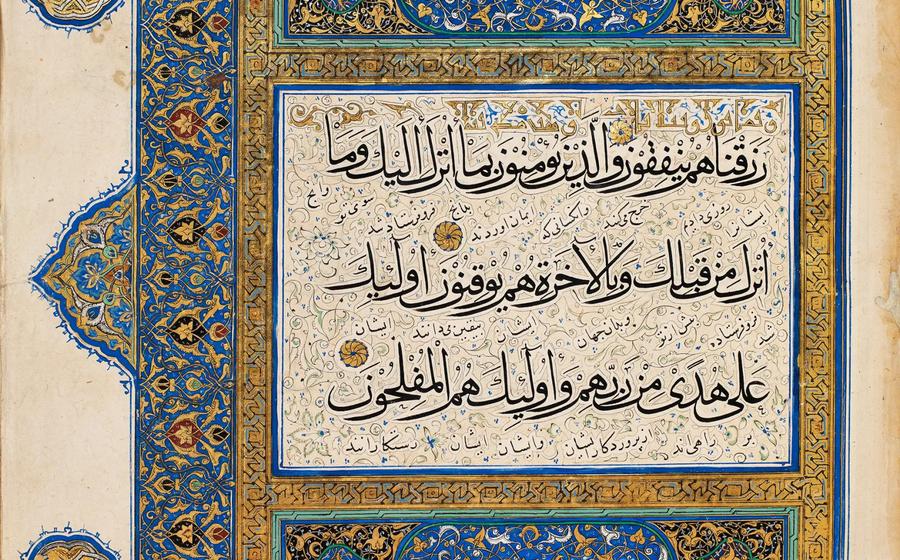
Edirne Turkish and Islamic Works Museum
- Edirne Turkish and Islamic Works Museum: A Journey Through History and Art
- Exploring the Museum's Collections: A Treasure Trove of Ottoman Heritage
- Ottoman Manuscripts: Unveiling the Written Legacy
- Carpets: Woven Masterpieces of Anatolian Craftsmanship
- Ceramics: A testament to Anatolian Pottery Traditions
- Textiles: Embroideries, Fabrics, and Costumes of the Ottoman Empire
- Metalwork: Intricate Craftsmanship in Silver, Gold, and Copper
- Woodwork: Exquisite Carvings and Inlaid Furniture
- Stonework: Architectural Elements and Decorative Pieces
- Calligraphy: The Art of Beautiful Writing in the Ottoman Empire
- Miniature Paintings: A Window into Ottoman Court Life
- Bookbinding: Preserving Knowledge and Artistic Expression
- Numismatics: Coins and Currency of the Ottoman Empire
- Ethnography: Exploring the Diverse Cultures of the Ottoman Empire
- Insider Tip: Uncover Hidden Gems
Edirne Turkish and Islamic Works Museum: A Journey Through History and Art
Nestled in the heart of Edirne, the Turkish and Islamic Works Museum stands as a testament to the rich cultural heritage of Turkey and the Ottoman Empire. This magnificent museum houses an extensive collection of artifacts that span centuries of history, offering visitors a captivating journey through the artistic and cultural achievements of the Islamic world.
The museum's historical significance is deeply intertwined with the city of Edirne, which served as the capital of the Ottoman Empire from 1365 to 145During this period, Edirne flourished as a center of art, culture, and learning, attracting skilled artisans and scholars from across the empire. The museum's collection reflects this vibrant era, showcasing the diverse artistic traditions that converged in the Ottoman capital.
The architectural design of the museum itself is a masterpiece, blending traditional Ottoman elements with modern functionality. The building's elegant facade is adorned with intricate carvings and calligraphy, hinting at the treasures that lie within. Inside, visitors are greeted by a spacious and well-lit exhibition space, designed to showcase the museum's vast collection in a visually appealing and informative manner.
Conveniently located in the city center, the Edirne Turkish and Islamic Works Museum is easily accessible to visitors from around the world. Whether you're a history buff, an art enthusiast, or simply seeking a glimpse into the cultural tapestry of Turkey, this museum promises an enriching and unforgettable experience.
Exploring the Museum's Collections: A Treasure Trove of Ottoman Heritage
The Edirne Turkish and Islamic Works Museum houses a diverse and impressive collection of artifacts that offer a glimpse into the rich artistic and cultural heritage of the Ottoman Empire. From exquisite manuscripts and carpets to stunning ceramics and intricate metalwork, the museum's exhibits provide a comprehensive overview of Ottoman art and craftsmanship.
Each item in the collection holds historical significance, reflecting the cultural, social, and economic milieu of its time. Visitors can marvel at the delicate brushstrokes and elaborate illuminations in Ottoman manuscripts, which served as a medium for recording knowledge, history, and literature. Carpets, with their intricate patterns and vibrant colors, showcase the exceptional craftsmanship of Anatolian weavers and their ability to create works of art that were both functional and aesthetically pleasing.
Ceramics, featuring the distinctive styles of Iznik, Kütahya, and Çanakkale, exemplify the blending of Ottoman aesthetics with traditional Anatolian pottery techniques. These pieces, with their intricate motifs and vibrant glazes, were highly valued for their beauty and practicality, serving both decorative and utilitarian purposes.
The museum's textile collection offers a glimpse into the rich tradition of Ottoman textiles and their significance in everyday life. Visitors can admire finely woven kaftans, intricate embroideries, and delicate headscarves, each reflecting the social status and cultural identity of their owners. These textiles showcase the skill and artistry of Ottoman weavers, who employed a variety of techniques, including weaving, embroidery, and printing, to create stunning and durable fabrics.
Ottoman Manuscripts: Unveiling the Written Legacy
Ottoman manuscripts, with their intricate calligraphy, vibrant illuminations, and historical significance, form a cornerstone of the Edirne Turkish and Islamic Works Museum's collection. These handwritten treasures offer a glimpse into the rich literary, artistic, and scholarly traditions of the Ottoman Empire.
Among the highlights of the manuscript collection are rare and valuable examples from the early Ottoman period, including beautifully illustrated copies of the Quran and historical chronicles. These manuscripts showcase the exquisite craftsmanship and attention to detail that characterized Ottoman manuscript production.
The art of calligraphy, with its graceful strokes and elegant flourishes, is prominently featured in the museum's collection. Visitors can admire manuscripts adorned with intricate calligraphic scripts, each letter carefully penned by skilled scribes. The use of gold and silver ink adds a touch of opulence and grandeur to these precious works.
Illuminations, with their vibrant colors and intricate designs, further enhance the visual appeal of Ottoman manuscripts. These decorative elements, often featuring floral motifs, geometric patterns, and scenes from everyday life, bring the manuscripts to life and add depth and context to the written text.
The Edirne Turkish and Islamic Works Museum's collection of Ottoman manuscripts is not merely a repository of historical artifacts but a testament to the enduring legacy of Islamic scholarship and artistic expression. These manuscripts provide a valuable resource for researchers, historians, and art enthusiasts alike, offering insights into the cultural, intellectual, and religious life of the Ottoman Empire.
Carpets: Woven Masterpieces of Anatolian Craftsmanship
Anatolian carpets, renowned for their exquisite designs and intricate patterns, hold a special place in Turkish culture and art. The Edirne Turkish and Islamic Works Museum houses a remarkable collection of these woven masterpieces, showcasing the rich tradition of carpet weaving in Turkey.
The carpets in the museum's collection span various periods and regions of the Ottoman Empire, each with its unique characteristics. Visitors can admire carpets from the renowned weaving centers of Hereke, Uşak, and Bergama, each renowned for its distinct styles and motifs.
One of the highlights of the collection is a magnificent Hereke silk carpet, hand-knotted with intricate floral patterns and vibrant colors. The carpet exemplifies the exceptional craftsmanship of Hereke weavers, who were renowned for their ability to create carpets of extraordinary beauty and precision.
Another notable piece is a Uşak wool carpet, featuring a geometric design with bold colors and striking patterns. Uşak carpets were highly prized for their durability and were often used in mosques and other public spaces.
The museum's collection also includes a variety of smaller carpets and rugs, each with its unique story to tell. Whether it's a prayer rug with intricate Islamic motifs or a decorative rug with playful designs, these carpets offer a glimpse into the diverse styles and functions of carpets in Ottoman society.
Beyond their aesthetic value, Anatolian carpets hold deep cultural significance. The motifs and patterns woven into these carpets often carry symbolic meanings, reflecting the beliefs, traditions, and aspirations of the people who created them.
The Edirne Turkish and Islamic Works Museum's collection of carpets provides a fascinating journey through the history and artistry of Anatolian carpet weaving, showcasing the enduring legacy of this cherished Turkish craft.
Ceramics: A testament to Anatolian Pottery Traditions
The Edirne Turkish and Islamic Works Museum houses a remarkable collection of ceramics, showcasing the rich pottery traditions that flourished in Anatolia throughout the Ottoman period. Among the highlights are exquisite examples of Iznik, Kütahya, and Çanakkale ceramics, each renowned for its unique characteristics and artistic expressions.
The Iznik ceramics, produced in the city of İznik during the 16th and 17th centuries, are particularly notable for their vibrant colors and intricate floral motifs. The museum's collection includes stunning plates, bowls, and tiles adorned with tulips, carnations, and hyacinths, reflecting the influence of Ottoman gardens and nature.
Kütahya ceramics, originating from the city of Kütahya, are known for their distinctive blue-and-white designs. The museum's collection features a variety of Kütahya pieces, including plates, vases, and tiles, showcasing the intricate patterns and motifs that made this region famous.
Çanakkale ceramics, produced in the Çanakkale region, are renowned for their distinctive red clay bodies and geometric designs. The museum's collection includes a range of Çanakkale ceramics, including jugs, plates, and bowls, demonstrating the diversity and craftsmanship of this pottery tradition.
The influence of Ottoman culture and aesthetics is evident in the ceramics on display. Many of the pieces feature motifs and symbols that were popular during the Ottoman period, such as the tulip, the crescent, and the star. The ceramics also showcase the technical prowess of Ottoman potters, who mastered the art of glazing, firing, and decoration to create beautiful and durable works of art.
The Edirne Turkish and Islamic Works Museum's collection of ceramics offers a glimpse into the vibrant and diverse ceramic traditions of Anatolia during the Ottoman period. These exquisite works of art not only showcase the skill and artistry of Ottoman potters but also provide valuable insights into the cultural and aesthetic sensibilities of the era.
Textiles: Embroideries, Fabrics, and Costumes of the Ottoman Empire
Textiles played a pivotal role in Ottoman culture, serving not only functional purposes but also as expressions of social status, cultural identity, and artistic achievement. The Edirne Turkish and Islamic Works Museum houses a captivating collection of Ottoman textiles, offering visitors a glimpse into the rich tapestry of the empire's textile traditions.
Among the highlights of the collection are exquisite kaftans, elaborate head coverings, and intricately embroidered garments. These textiles showcase the exceptional craftsmanship and artistry of Ottoman textile artisans. The vibrant colors, intricate patterns, and delicate fabrics reflect the influence of diverse cultures and traditions that converged within the vast Ottoman realm.
The museum's collection also includes examples of Ottoman fabrics, such as silks, velvets, and brocades. These luxurious materials were often imported from distant lands, underscoring the empire's extensive trade networks and global connections. The fabrics were used to create sumptuous clothing, furnishings, and decorative items, adding an air of opulence and refinement to Ottoman interiors.
Textiles played a significant role in reflecting social status and cultural identity within the Ottoman Empire. Elaborate garments and textiles were worn by the elite and wealthy, while simpler fabrics and designs were used by the common people. The intricate embroidery and embellishments on clothing often carried symbolic meanings, conveying messages about the wearer's marital status, social rank, or religious beliefs.
The museum's collection of Ottoman textiles provides valuable insights into the empire's diverse cultural heritage. These exquisite artifacts offer a tangible connection to the past, showcasing the artistry, craftsmanship, and cultural traditions that flourished during the Ottoman era.
Metalwork: Intricate Craftsmanship in Silver, Gold, and Copper
The Ottoman Empire embraced metalworking as an art form, producing exquisite objects that showcased the skill and artistry of its craftsmen. The Edirne Turkish and Islamic Works Museum houses a diverse collection of metalwork, inviting visitors to marvel at the intricate craftsmanship of silver, gold, and copper objects.
Among the highlights of the collection are intricately engraved silver trays, adorned with floral motifs and delicate filigree work. Gold jewelry sparkles in display cases, showcasing the precision and beauty of Ottoman goldsmithing. Copper vessels, ranging from humble cooking pots to ornate decorative pieces, exemplify the versatility of this metal in Ottoman craftsmanship.
The decorative techniques employed in Ottoman metalwork are as diverse as the objects themselves. Engraving, filigree, and inlay are just a few of the methods used to embellish metal surfaces. Artisans employed these techniques to create intricate patterns, calligraphy, and figural designs, transforming ordinary objects into works of art.
Beyond their aesthetic appeal, these metalwork pieces played a significant role in everyday life and religious practices. Silver trays and bowls were used for serving food and beverages, while copper pots and pans were essential for cooking. Ornate metal objects, such as ewers and basins, were used for ceremonial purposes, particularly in religious ceremonies and rituals.
The Edirne Turkish and Islamic Works Museum's collection of metalwork offers a glimpse into the mastery and creativity of Ottoman craftsmen. These objects not only demonstrate the artisans' technical prowess but also showcase the cultural and historical significance of metalworking in the Ottoman Empire.
Woodwork: Exquisite Carvings and Inlaid Furniture
The tradition of woodworking in Ottoman Turkey reached remarkable heights, producing intricate carvings and inlaid furniture that continue to captivate visitors to the Edirne Turkish and Islamic Works Museum. From intricately carved wooden furniture to decorative doors and panels, the museum showcases the virtuosity of Ottoman woodworkers.
One of the highlights of the collection is a magnificent wooden door adorned with intricate carvings. The door features a complex geometric design, with interlocking patterns and stylized floral motifs. The level of detail and precision in the carving is simply breathtaking.
Another must-see is a set of inlaid wooden furniture, which includes a table, chairs, and a cabinet. The furniture is adorned with intricate marquetry work, where different types of wood are inlaid to create intricate patterns and images. The motifs on the furniture often depict scenes from nature, such as flowers, birds, and animals, demonstrating the artisans' keen observation of the natural world.
The use of inlay techniques, particularly mother-of-pearl inlay, is a distinctive feature of Ottoman woodworking. Artisans skillfully inlaid pieces of mother-of-pearl into the wood, creating shimmering and iridescent effects. This technique was often used to highlight certain elements of the design, such as the borders of furniture or the handles of doors.
The woodworking tradition in Ottoman Turkey was not only limited to furniture. The museum also displays a collection of carved wooden panels and architectural elements, such as columns and window frames. These pieces often feature intricate geometric designs, as well as vegetal and calligraphic motifs. The carved wooden elements add a touch of elegance and refinement to the overall aesthetic of Ottoman buildings.
The exquisite woodwork on display at the Edirne Turkish and Islamic Works Museum is a testament to the skill and artistry of Ottoman craftsmen. These pieces not only served a functional purpose but also elevated the aesthetic beauty of Ottoman interiors, contributing to the rich cultural heritage of Turkey.
Stonework: Architectural Elements and Decorative Pieces
Stone, a versatile and durable material, played a pivotal role in Ottoman architecture and decorative arts. The museum showcases an impressive collection of carved stone panels, columns, and fountains, each adorned with intricate patterns and symbolism. These stone elements not only served functional purposes but also added aesthetic value to buildings and public spaces. The museum's exhibits provide insights into the techniques employed by skilled Ottoman stonemasons, who transformed ordinary stone into works of art.
One of the highlights of the collection is a beautifully carved stone panel depicting a hunting scene. The panel, which once adorned a palace, features a detailed portrayal of a royal hunt, with riders on horseback pursuing game amidst a lush landscape. The intricate carvings showcase the artist's mastery of stone carving and his ability to capture the essence of motion and drama.
Another notable exhibit is a collection of stone columns and capitals from Ottoman mosques. These columns, with their graceful proportions and intricate carvings, demonstrate the architectural prowess of Ottoman builders. The capitals, adorned with floral and geometric motifs, reflect the influence of Islamic art and architecture.
The museum also houses a collection of stone fountains, which were an integral part of Ottoman urban landscapes. These fountains, often adorned with verses from the Quran or inscriptions commemorating their donors, provided a vital source of water for the community. The intricate carvings on the fountains, depicting mythical creatures and floral patterns, showcase the artistic sensibilities of Ottoman craftsmen.
The stonework in the Edirne Turkish and Islamic Works Museum offers a glimpse into the architectural and artistic achievements of the Ottoman Empire. These stone elements, with their symbolic and aesthetic significance, played a vital role in shaping the urban landscape and cultural heritage of Edirne.
Calligraphy: The Art of Beautiful Writing in the Ottoman Empire
Calligraphy, the art of beautiful writing, holds a significant place in Islamic art and culture. It is considered a form of visual expression that transcends mere functionality, elevating written words into works of art. The Edirne Turkish and Islamic Works Museum houses a remarkable collection of Ottoman calligraphy, showcasing the mastery and diversity of this ancient art form.
Examples of exquisite calligraphy grace the museum's walls, each stroke and flourish a testament to the skill and patience of the calligraphers who created them. Visitors can admire manuscripts adorned with intricate kufic, naskh, and thuluth scripts, each style possessing its own unique characteristics and aesthetic appeal.
The museum's collection includes imperial decrees, religious texts, and literary works, all meticulously penned by master calligraphers. These manuscripts not only hold historical and cultural significance but also serve as stunning examples of the art of calligraphy, demonstrating the precision, balance, and harmony that define this art form.
Ottoman calligraphers were highly revered and respected members of society, often commissioned by sultans and wealthy patrons to create works of art that would adorn palaces, mosques, and libraries. Their skill in manipulating the Arabic script, with its intricate ligatures and flourishes, transformed written words into visual masterpieces.
Exploring the calligraphy collection at the Edirne Turkish and Islamic Works Museum offers a glimpse into the rich artistic heritage of the Ottoman Empire and the enduring legacy of this ancient art form. Visitors can marvel at the beauty and precision of these written artworks, appreciating the skill and dedication of the calligraphers who created them.
Miniature Paintings: A Window into Ottoman Court Life
The Edirne Turkish and Islamic Works Museum houses a remarkable collection of Ottoman miniature paintings, offering a glimpse into the vibrant and intricate world of the Ottoman court and society. These exquisite works of art, created by skilled miniaturists, provide a visual narrative of historical events, everyday life, and cultural traditions during the Ottoman era.
The miniatures depict a wide range of subjects, including court scenes, battles, hunting expeditions, and landscapes. They offer a unique perspective on the lives of sultans, courtiers, and ordinary people, revealing their customs, attire, and interactions. The paintings are characterized by their meticulous attention to detail, vibrant colors, and symbolic imagery.
One of the highlights of the collection is a miniature depicting the conquest of Constantinople by Mehmed the Conqueror in 145This iconic painting captures the drama and significance of this historic event, showcasing the Ottoman army's triumph and the fall of the Byzantine Empire. Other miniatures depict scenes from the lives of famous sultans, such as Süleyman the Magnificent and Selim I, offering insights into their personalities and achievements.
The museum's collection also includes miniatures that showcase the diversity of Ottoman society. These works depict merchants, artisans, farmers, and religious figures, providing a glimpse into their daily lives and cultural practices. The miniatures also offer insights into the role of women in Ottoman society, depicting them in various settings, including the harem, the marketplace, and the countryside.
Examining these miniature paintings is like embarking on a journey through time, allowing visitors to witness the grandeur and complexity of the Ottoman Empire. They are a testament to the skill and artistry of Ottoman miniaturists and provide a valuable window into the rich cultural heritage of Turkey.
Bookbinding: Preserving Knowledge and Artistic Expression
Bookbinding played a crucial role in the preservation and dissemination of knowledge during the Ottoman Empire. The museum's collection showcases a diverse range of Ottoman bookbinding techniques and materials, inviting visitors to explore the intricate artistry and craftsmanship that went into protecting and adorning manuscripts. From simple leather covers to elaborate bindings adorned with intricate tooling, gold leaf, and precious stones, these examples provide a glimpse into the high esteem in which books were held in Ottoman society.
Ottoman bookbinders employed a variety of techniques to ensure the durability and beauty of their creations. They used sturdy materials such as leather, parchment, and wood for the covers, and employed various sewing methods to secure the pages. Decorative elements were often incorporated into the bindings, including blind tooling, gold tooling, and inlays of colored leather or semi-precious stones. These decorative motifs ranged from geometric patterns to floral designs and calligraphic inscriptions, reflecting the artistic sensibilities of the period.
Beyond their functional purpose, Ottoman bookbindings also served as a canvas for artistic expression. The intricate designs and embellishments reflected the cultural and aesthetic values of the Ottoman Empire. By preserving these exquisite examples of bookbinding, the Edirne Turkish and Islamic Works Museum plays a vital role in safeguarding the tangible heritage of this rich and vibrant civilization.
Numismatics: Coins and Currency of the Ottoman Empire
The Edirne Turkish and Islamic Works Museum houses a remarkable collection of Ottoman coins, offering visitors a glimpse into the economic and political history of the empire. The numismatic section of the museum displays coins from different periods and rulers, providing insights into the monetary systems and trade practices of the Ottomans.
Visitors can admire gold, silver, and copper coins minted during the reign of various sultans, each bearing unique designs and inscriptions. These coins not only served as a medium of exchange but also held symbolic and commemorative value.
The museum's collection includes rare and valuable coins, such as the akçe, the primary silver coin of the Ottoman Empire, and the gold coins known as altin. These coins played a crucial role in facilitating trade and commerce throughout the vast Ottoman territories.
By examining the coins' designs, inscriptions, and mint marks, visitors can gain insights into the economic policies and monetary reforms implemented by different sultans. The numismatic collection also sheds light on the empire's interactions with other regions and cultures, as coins often incorporated elements from various civilizations that came into contact with the Ottomans.
Exploring the numismatic section of the Edirne Turkish and Islamic Works Museum is a fascinating journey through the financial history of the Ottoman Empire, allowing visitors to appreciate the artistry, symbolism, and historical significance of these small, yet powerful objects.
Ethnography: Exploring the Diverse Cultures of the Ottoman Empire
The Edirne Turkish and Islamic Works Museum houses a rich collection of ethnographic artifacts that provide a glimpse into the diverse cultures and traditions of the vast Ottoman Empire. From traditional costumes and textiles to musical instruments and household objects, these artifacts offer a tangible connection to the lives and customs of people from across the empire's far-flung territories.
The museum's ethnographic collection includes items from various regions, including the Balkans, Anatolia, the Middle East, and North Africa. Visitors can admire intricately embroidered garments, woven carpets, and gleaming metalwork, each representing a unique cultural heritage. These artifacts showcase the diversity of ethnic groups, religions, and lifestyles that coexisted within the Ottoman Empire.
By studying and preserving this ethnographic heritage, the museum plays a vital role in understanding the social customs, traditions, and beliefs that shaped the empire's rich cultural tapestry. Through these artifacts, visitors can gain insights into the daily lives, rituals, and celebrations of the people who inhabited the Ottoman lands.
Insider Tip: Uncover Hidden Gems
Delve deeper into the museum's treasures by exploring lesser-known exhibits and artifacts that often go unnoticed by casual visitors. Look for special exhibitions and events held throughout the year, where you can discover unique pieces and delve into specific aspects of Ottoman history and culture. Engage with museum staff and docents, who are knowledgeable and passionate about the collection. They can provide insights, anecdotes, and historical context that will enhance your understanding of the exhibits. Take advantage of guided tours offered by the museum, led by experts who can share their knowledge and provide a deeper appreciation for the museum's treasures. These tours often include access to restricted areas and behind-the-scenes glimpses of the museum's operations.


